Norway’s only landlocked county, Innlandet, is a vast and diverse region known for its mountainous and rural landscapes, rich cultural heritage, and strong agricultural and industrial economy.
Stretching from the borders of Sweden in the east to the towering peaks of Jotunheimen National Park in the west, Innlandet offers everything from deep forests and rolling farmlands to dramatic mountains and vibrant small towns.
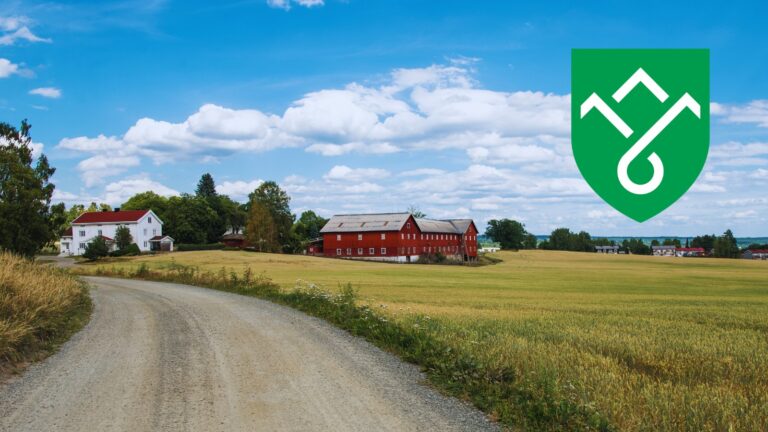
The area was historically part of the Norwegian counties of Oppland and Hedmark, which merged to form ‘Innlandet' in Norway's county reorganisation of 2020.
Whether you’re a history buff, an outdoor enthusiast, or simply curious about everyday life in one of Norway’s most scenic regions, this guide will introduce you to the key aspects of Innlandet County.
Geography and Nature
Innlandet is Norway’s largest county by land area and spans a wide range of landscapes.
It includes vast mountain ranges, deep valleys, and sprawling forests, making it a paradise for outdoor activities year-round. The region has no coastline but more than makes up for it with an abundance of lakes and rivers.
Innlandet is home to some of Norway’s most stunning national parks, each offering unique landscapes and outdoor experiences.
Part of Jotunheimen National Park falls within Innlandet. The park is a paradise for hikers and mountaineers, boasting Norway’s highest peaks, including Galdhøpiggen at 2,469 metres and Glittertind at 2,452 metres.
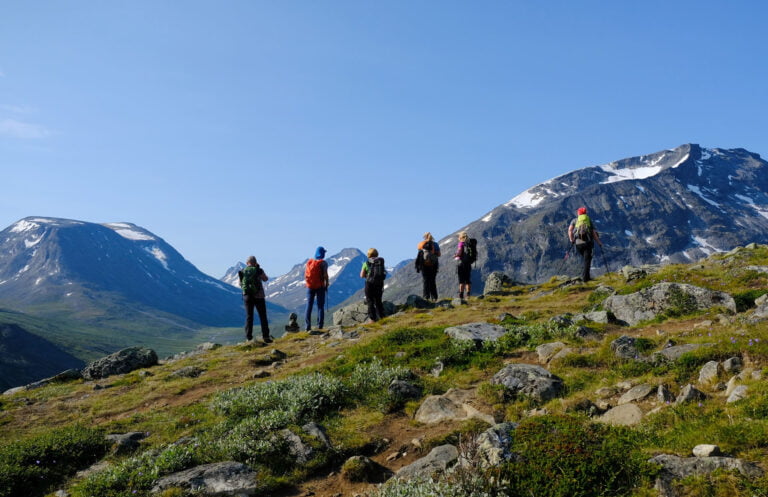
The park features dramatic mountain scenery, glacial lakes, and challenging trekking routes like Besseggen Ridge, one of Norway’s most famous hikes.
Rondane National Park, Norway’s first national park, is characterised by vast plateaus, jagged peaks, and deep valleys. It is one of the best places to experience Norway’s wild reindeer population, which has roamed these lands for thousands of years.
Femundsmarka National Park is a remote and untouched wilderness, famous for its pristine lakes, dense forests, and excellent canoeing routes. The park is a haven for those seeking tranquility, with opportunities for hiking, fishing, and paddling through its interconnected lakes and rivers.
Dovrefjell-Sunndalsfjella National Park is the only place in Norway where visitors can see wild musk oxen, descendants of the prehistoric animals that once roamed Europe. The park’s rugged mountains and vast tundra are also home to reindeer, golden eagles, and Arctic foxes.
The valleys of Gudbrandsdalen and Østerdalen form the backbone of Innlandet, shaping its culture and economy for centuries. These valleys provide fertile farmland, vital transport routes, and picturesque villages.
A Brief History of Innlandet
Innlandet has a long and fascinating history, deeply rooted in Norway’s rural traditions.
During the Viking Age, the region was home to important Norse settlements. Archaeological discoveries, including burial mounds and rune stones, reveal traces of early society and provide insight into the way people lived during this era.
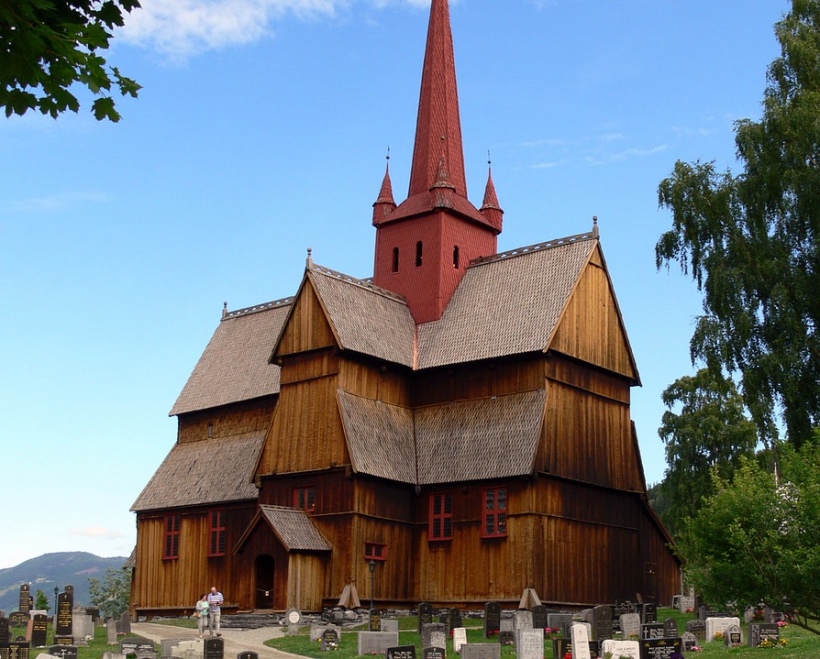
As Norway entered the medieval period, many churches and farmsteads were established, some of which still stand today.
One of the most notable is Ringebu Stave Church, a beautifully preserved wooden church that remains one of only 28 surviving stave churches in Norway.
In more recent history, Innlandet gained international recognition when Lillehammer hosted the 1994 Winter Olympics.
The event not only put the region on the global stage for winter sports but also contributed to the development of infrastructure and tourism, solidifying Lillehammer as a major hub for skiing and outdoor recreation in Norway.
Although the term ‘Innlandet' had long been used to describe the area, it became the official name of a new county when Oppland and Hedmark counties merged in 2020.
Innlandet's Towns and Cities
While Innlandet is largely rural, it is home to several towns and cities, each with its own unique character.
Lillehammer is perhaps the most well-known, having hosted the 1994 Winter Olympics. Today, it remains a hub for winter sports, with excellent skiing facilities at Hafjell and a strong connection to Norway’s sporting heritage.
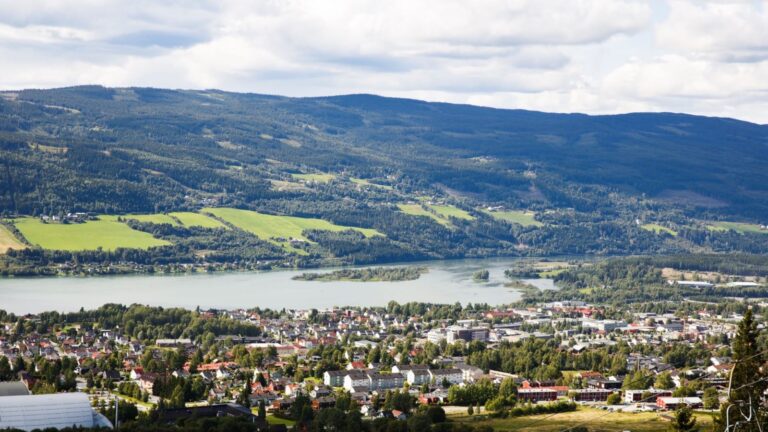
The city is also rich in cultural attractions, including the Maihaugen open-air museum, the Norwegian Olympic Museum, and Hunderfossen Family Park, which make it a popular destination for both history enthusiasts and families.
Hamar, the administrative center of Innlandet, sits on the shores of Lake Mjøsa, Norway’s largest lake. It is famous for Vikingskipet, or the Viking Ship Hall, a striking speed skating arena built for the 1994 Olympics.
The town also boasts the ruins of Hamar Cathedral, a medieval site now preserved within a modern glass enclosure, blending history with contemporary architecture.
Further along the shores of Mjøsa lies Gjøvik, another lakeside town known for the Skibladner, the world’s oldest paddle steamer still in operation. Gjøvik has a strong industrial heritage, particularly in glass manufacturing, and continues to be an important center for regional commerce and industry.
Elverum, located in the heart of Norway’s vast forests, is known for its deep connection to the timber industry. The Norwegian Forestry Museum, a key attraction in the town, highlights the region’s logging history. The town is also home to Terningmoen, a significant Norwegian military base.
Other notable towns include Kongsvinger, with its historic fortress overlooking the Glomma River, and Otta, a key gateway to Jotunheimen National Park.
Røros, a UNESCO-listed former mining town, is technically just outside Innlandet’s borders but remains deeply connected to the region’s history and cultural identity.
Getting Around Innlandet
Despite its vast and sometimes rugged terrain, Innlandet boasts a well-developed transport network that makes travel across the region relatively straightforward.
The county is well connected by road, with the E6 highway serving as the main north-south route, linking Oslo to Trondheim via Lillehammer and Gudbrandsdalen.
For those traveling through the eastern part of the region, the Rv3 highway offers an alternative north-south route through Østerdalen, providing a scenic and often less congested option.
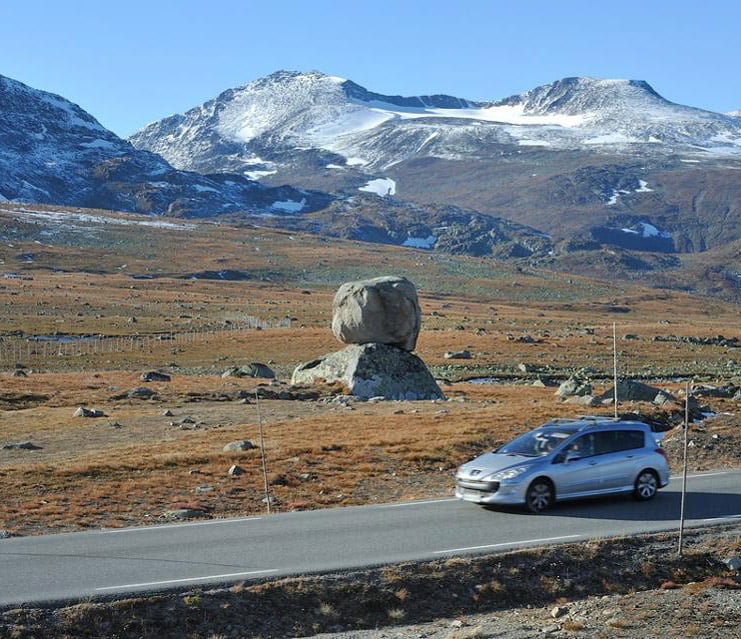
In addition to these major highways, Innlandet is home to numerous scenic roads, such as Valdresflye, which offer breathtaking views and excellent opportunities for road trips through the Norwegian countryside.
Rail travel is also an efficient way to get around, with several key railway lines serving the region. The Dovre Line, which runs between Oslo and Trondheim, stops in major towns like Hamar, Lillehammer, and Otta, making it a crucial transport link for both commuters and tourists.
The Røros Line provides another northbound route, connecting Hamar to Trondheim via Elverum, while the Gjøvik Line links Oslo to Gjøvik, ensuring easy access to the capital for residents of the western part of the county.
Although Innlandet does not have any major airports of its own, Oslo Airport Gardermoen, located just outside the county’s borders, serves as the primary gateway for both domestic and international travel.
Economy and Industry of Innlandet
Innlandet’s economy is driven by agriculture, forestry, manufacturing, and tourism. As one of Norway’s key farming regions, it produces dairy, meat, and grains, with major companies like Tine supporting local farmers.
The county’s vast forests make logging and timber production essential industries, with companies such as Moelven processing wood for construction and furniture.
Manufacturing also plays a role, with the Kongsberg Group contributing to defence and technology, while Gjøvik maintains a strong tradition in glass and aluminium production.
Tourism continues to grow, particularly in Lillehammer, where ski resorts like Hafjell and Kvitfjell attract winter visitors. In summer, the region offers hiking, cycling, and cultural sites like Maihaugen and Ringebu Stave Church, making it a year-round destination.
Outdoor Activities, Culture, and Traditions
Innlandet is a haven for outdoor enthusiasts, offering year-round activities that showcase its diverse landscapes. Hiking opportunities abound in Jotunheimen, Rondane, and Dovrefjell, where trails wind through dramatic mountain scenery.
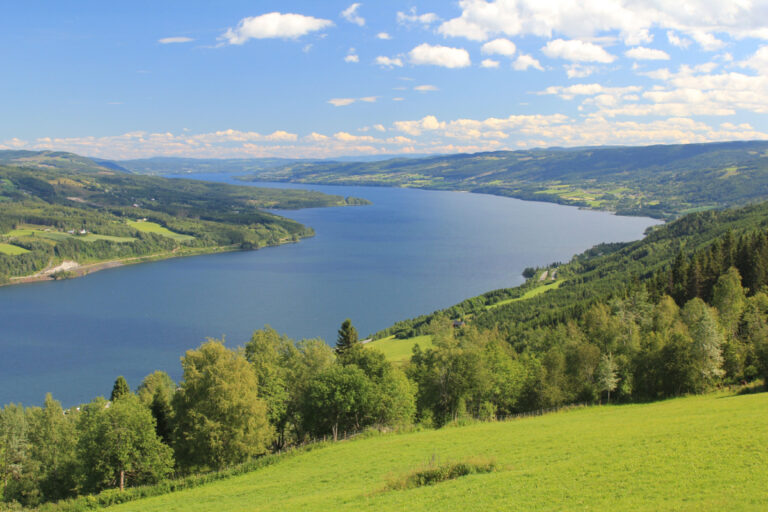
In winter, the region transforms into a skiing paradise, with Hafjell, Kvitfjell, and Trysil among the top destinations for alpine and cross-country skiing.
Those drawn to the water can enjoy fishing and canoeing in Lake Mjøsa and the remote wilderness of Femundsmarka, while cyclists can take in breathtaking countryside views along the Mjølkevegen cycling route.
Wildlife watching is another highlight, with opportunities to spot moose, reindeer, and even the rare musk ox in Dovrefjell.
Beyond its natural beauty, Innlandet is rich in culture and traditions, with festivals and culinary heritage deeply rooted in its rural lifestyle.
The Peer Gynt Festival in Gudbrandsdalen celebrates Henrik Ibsen’s famous play in the dramatic landscapes that inspired it, while the Lillehammer Literature Festival draws book lovers from across Norway.
Traditional food remains an essential part of local identity, with specialties such as rakfisk, a fermented fish delicacy, rømmegrøt, a creamy sour cream porridge, and game meats like moose and reindeer, all reflecting the county’s deep connection to its natural surroundings.
Have you ever visited Innlandet? Or perhaps you live there? I'd love to hear your experiences down in the comments.


